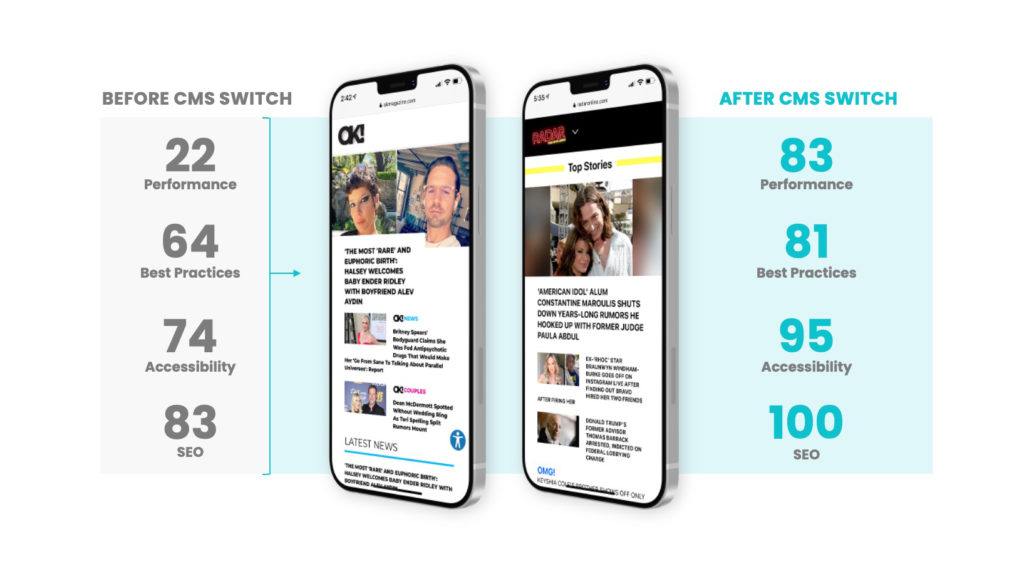Raise your hand if this has happened to you: You’re reading an article on a website when—in a blink—the page shifts, the content jumps and . . . you’re lost. I’m guessing most people reading this blog post have their hands up. Who hasn’t experienced this “now you see it, now you don’t” scenario? It’s so common it actually has a name: Cumulative Layout Shift (CLS).
CLS happens when a single ad slot is designed to host a wide array of sizes to maximize revenue potential. When a larger ad loads, it shifts the page layout, generally pushing content further down out of view. So, make the slot larger, right? Well, if you do that and a smaller ad loads, you can wind up with awkward white spaces that look like something’s missing. Add to that all the ways editorial images, videos and social embeds can shift an article lay out around and you have a page that can jump around quite a bit as ads and media load in different places at different sizes at different speeds. Not a good user experience at all.
Beyond the impact CLS has on UX and ad metrics like viewability, as of 2020, it became a major culprit in also lowering publisher SEO rankings on Google Search. CLS became one of the core metrics that the search engine takes into account along with speed, responsiveness and visual stability to determine how high—or low—a site lands on a results page. The higher the CLS frequency, the lower a site sinks, which we know can lead to a steep reduction in traffic and audience.
While Google was making CLS a key SEO metric, Kargo was building Fabrik, the first CMS with ad tech built-in. The advantage here: every page is designed to fluidly present content and ads for an optimal user experience which, of course, translates for optimal SEO rankings, too. In particular, we moved away from one-size-fits-many ad slots to protect against CLS.
And our formula works. Publisher partner Empire Media Group’s Lighthouse Metrics assessment captures how Fabrik changed the game for their sites, including Okmagazine.com and RadarOnline.

“Fabrik has supercharged our content and advertising capabilities. Our site works better, our audience has a better experience, and we are able to offer much more impactful, effective advertising experiences for brands. Fabrik represents the future in content management, eliminating the barrier between editorial and advertising in a unified offering,” said Paul Dousset, Chief innovation Officer at Empire Media Group.
Ad tech and Google algorithms will continue to evolve which means SEO will never be a “set it and forget it” process. That’s why our Fabrik approach will always be “reset it and best it.” So go ahead Google, bring the changes—we’ll be ready to meet and beat them. And so will all of our publishing partners.
